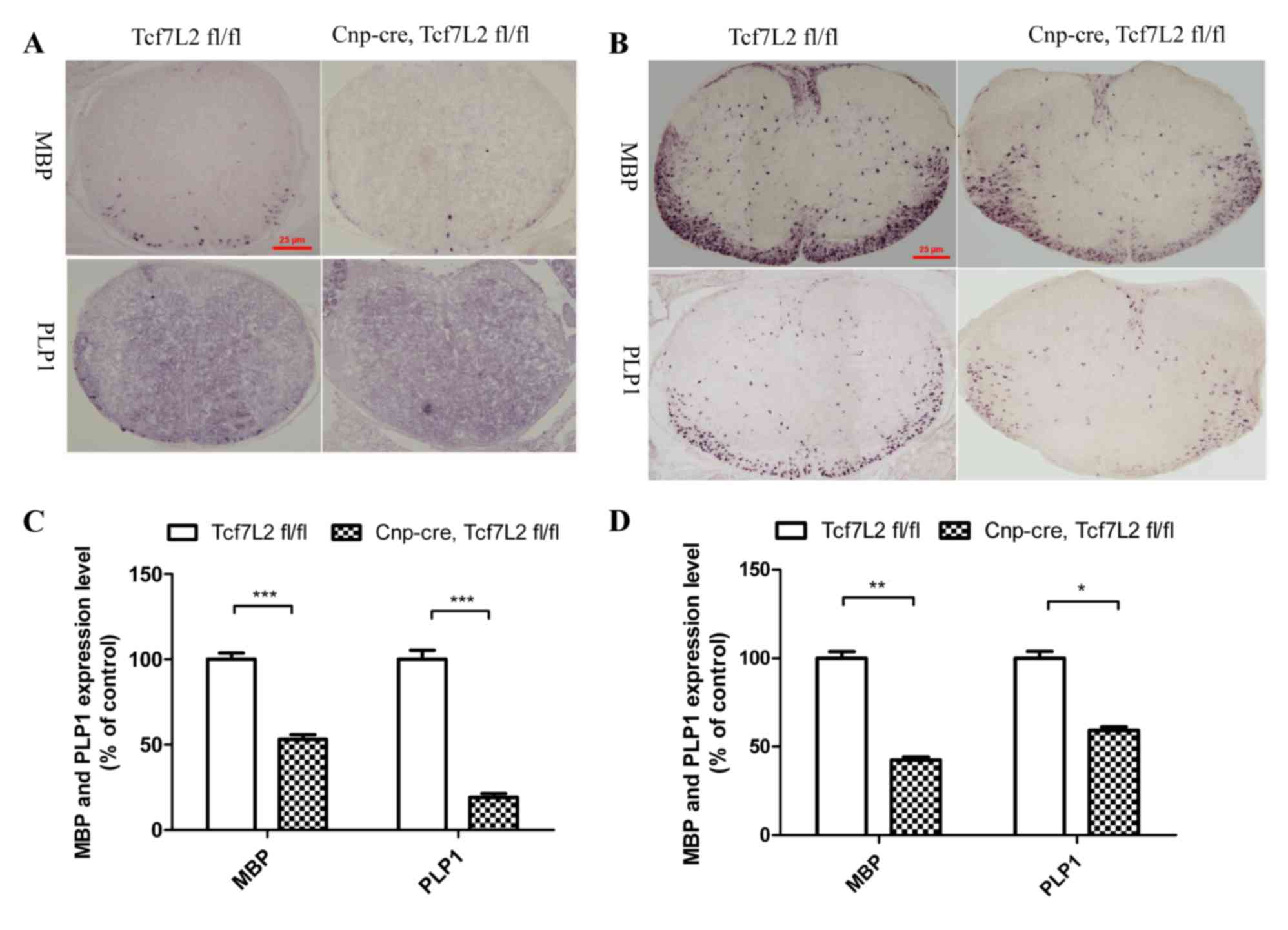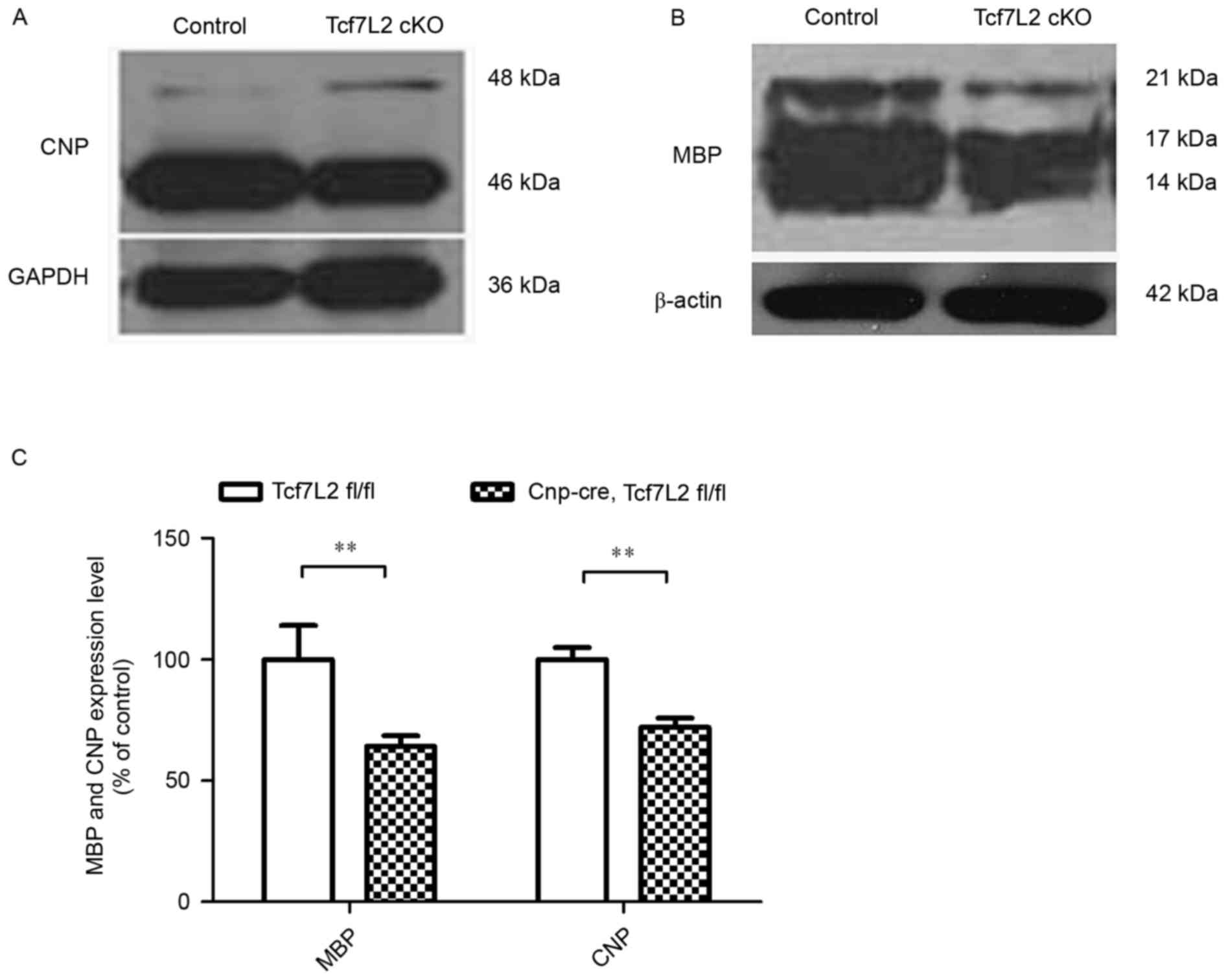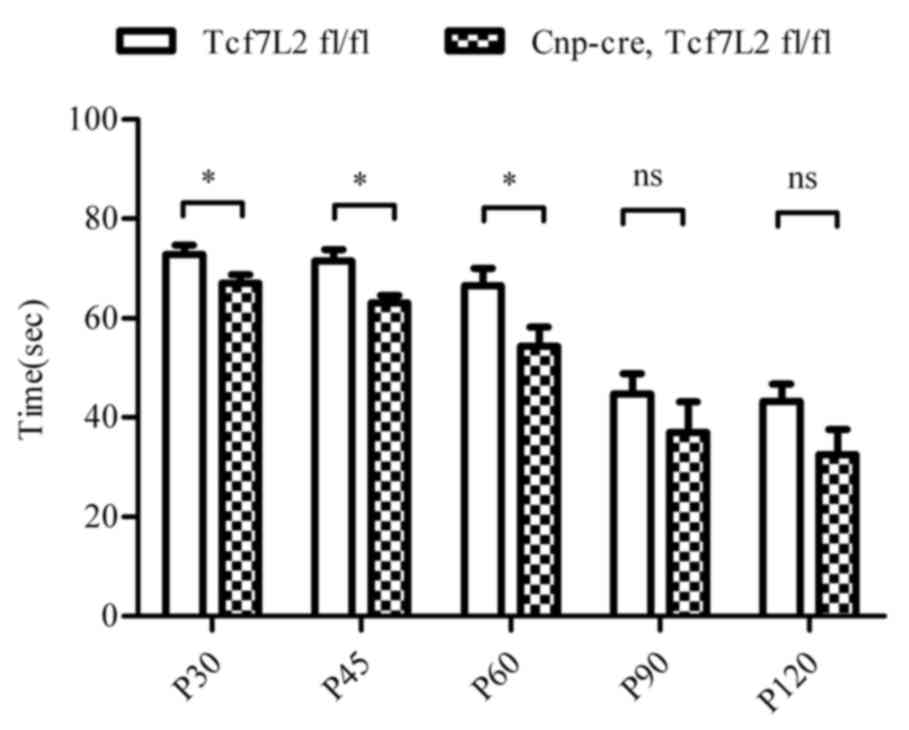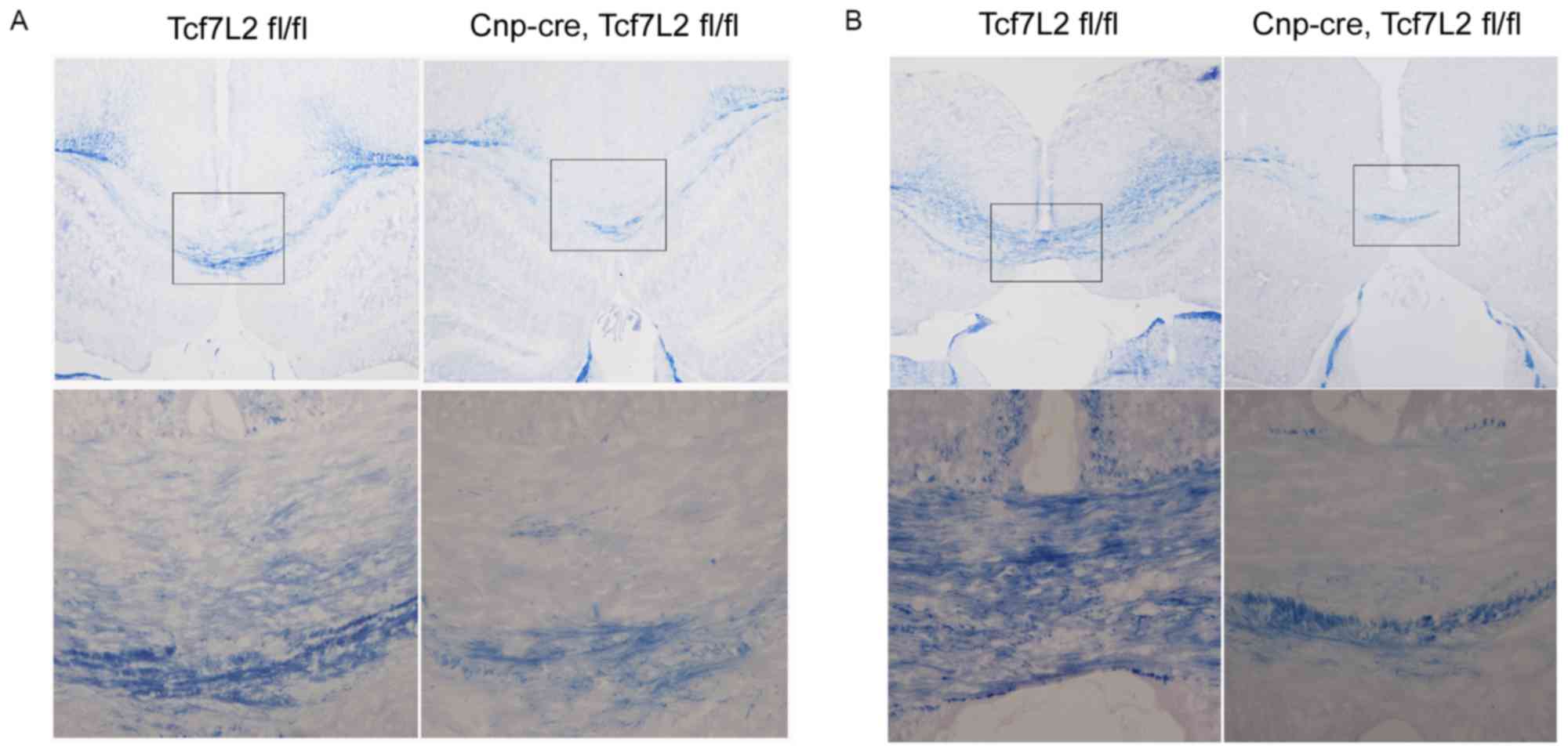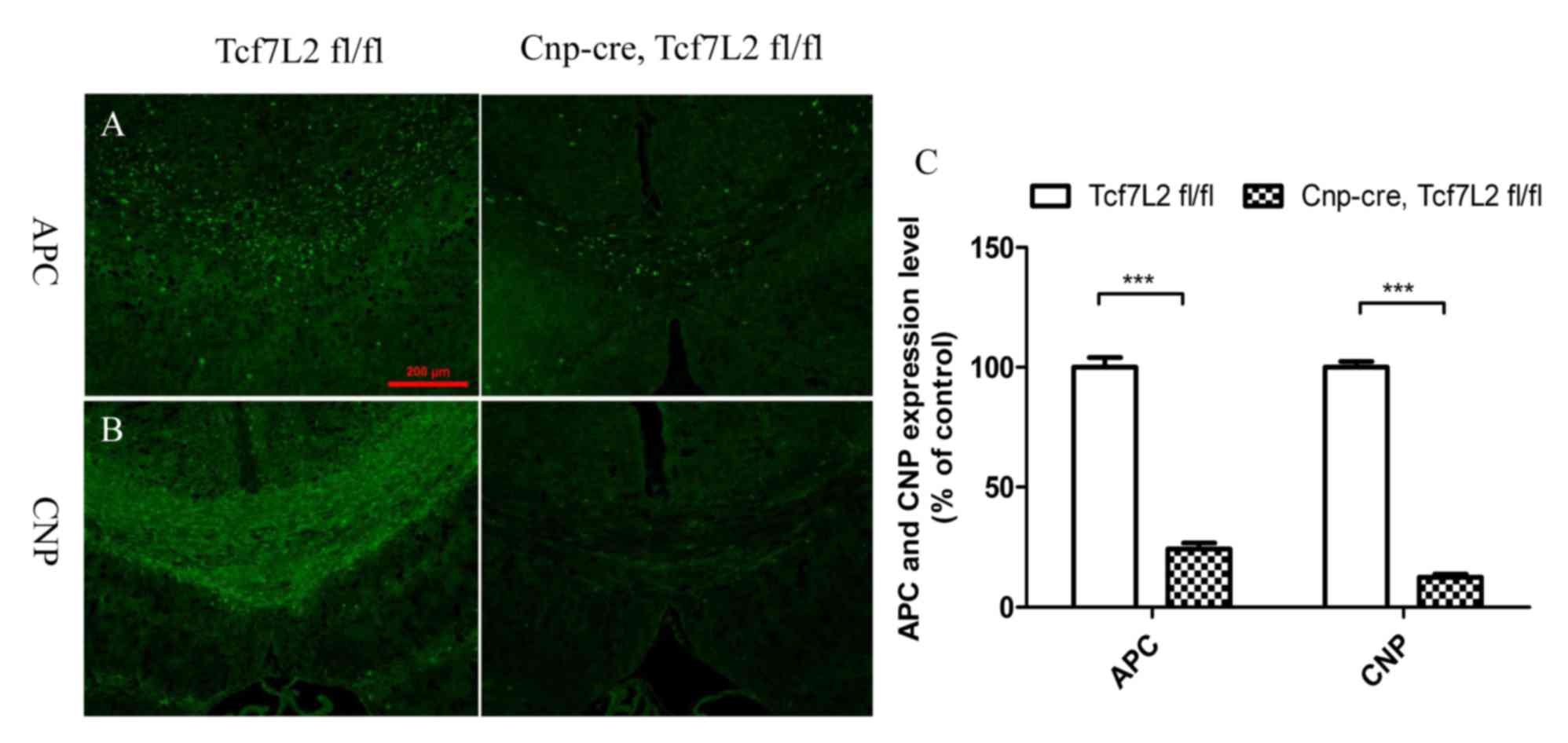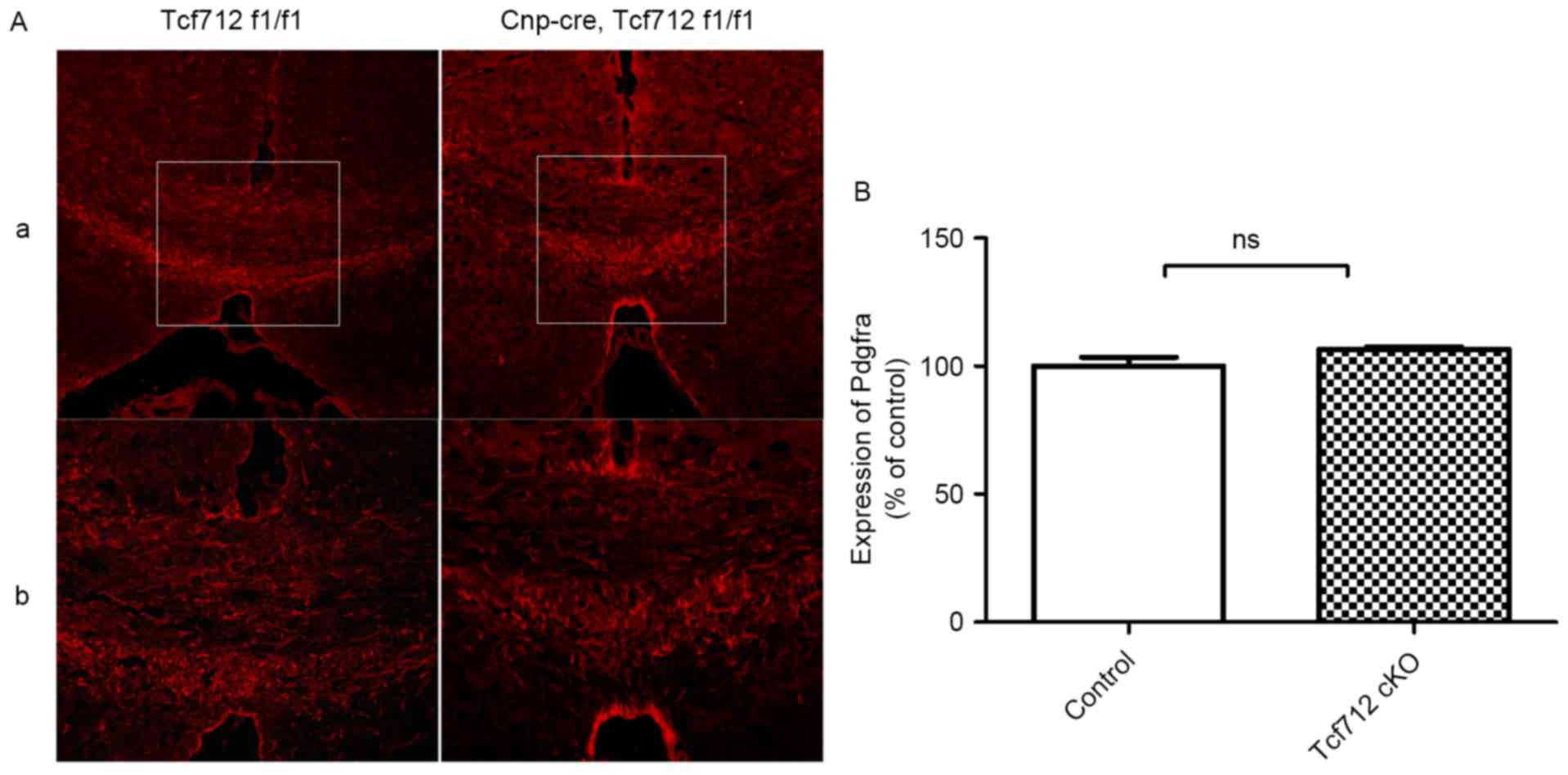|
1
|
Bercury KK and Macklin WB: Dynamics and
mechanisms of CNS myelination. Dev Cell. 32:447–458. 2015.
View Article : Google Scholar : PubMed/NCBI
|
|
2
|
Ishii A, Fyffe-Maricich SL, Furusho M,
Miller RH and Bansal R: ERK1/ERK2 MAPK signaling is required to
increase myelin thickness independent of oligodendrocyte
differentiation and initiation of myelination. J Neurosci.
32:8855–8864. 2012. View Article : Google Scholar : PubMed/NCBI
|
|
3
|
Franklin RJ and Ffrench-Constant C:
Remyelination in the CNS: From biology to therapy. Nat Rev
Neurosci. 9:839–855. 2008. View
Article : Google Scholar : PubMed/NCBI
|
|
4
|
El Waly B, Macchi M, Cayre M and Durbec P:
Oligodendrogenesis in the normal and pathological central nervous
system. Front Neurosci. 8:1452014. View Article : Google Scholar : PubMed/NCBI
|
|
5
|
Milo R and Kahana E: Multiple sclerosis:
Geoepidemiology, genetics and the environment. Autoimmun Rev.
9:A387–A394. 2010. View Article : Google Scholar : PubMed/NCBI
|
|
6
|
Compston A and Coles A: Multiple
sclerosis. Lancet. 372:1502–1517. 2008. View Article : Google Scholar : PubMed/NCBI
|
|
7
|
Zuchero JB and Barres BA: Intrinsic and
extrinsic control of oligodendrocyte development. Curr Opin
Neurobiol. 23:914–920. 2013. View Article : Google Scholar : PubMed/NCBI
|
|
8
|
He L and Lu QR: Coordinated control of
oligodendrocyte development by extrinsic and intrinsic signaling
cues. Neurosci Bull. 29:129–143. 2013. View Article : Google Scholar : PubMed/NCBI
|
|
9
|
Fancy SP, Kotter MR, Harrington EP, Huang
JK, Zhao C, Rowitch DH and Franklin RJ: Overcoming remyelination
failure in multiple sclerosis and other myelin disorders. Exp
Neurol. 225:18–23. 2010. View Article : Google Scholar : PubMed/NCBI
|
|
10
|
Lürbke A, Hagemeier K, Cui QL, Metz I,
Brück W, Antel J and Kuhlmann T: Limited TCF7L2 expression in MS
lesions. PLoS One. 8:e728222013. View Article : Google Scholar : PubMed/NCBI
|
|
11
|
Fancy SP, Harrington EP, Yuen TJ,
Silbereis JC, Zhao C, Baranzini SE, Bruce CC, Otero JJ, Huang EJ,
Nusse R, et al: Axin2 as regulatory and therapeutic target in
newborn brain injury and remyelination. Nat Neurosci. 14:1009–1016.
2011. View
Article : Google Scholar : PubMed/NCBI
|
|
12
|
Zhao C, Deng Y, Liu L, Yu K, Zhang L, Wang
H, He X, Wang J, Lu C, Wu LN, et al: Dual regulatory switch through
interactions of Tcf7l2/Tcf4 with stage-specific partners propels
oligodendroglial maturation. Nat Commun. 7:108832016. View Article : Google Scholar : PubMed/NCBI
|
|
13
|
Hammond E, Lang J, Maeda Y, Pleasure D,
Angus-Hill M, Xu J, Horiuchi M, Deng W and Guo F: The Wnt effector
transcription factor 7-like 2 positively regulates oligodendrocyte
differentiation in a manner independent of Wnt/β-catenin signaling.
J Neurosci. 35:5007–5022. 2015. View Article : Google Scholar : PubMed/NCBI
|
|
14
|
Boj SF, van Es JH, Huch M, Li VS, José A,
Hatzis P, Mokry M, Haegebarth A, van den Born M, Chambon P, et al:
Diabetes risk gene and Wnt effector Tcf7l2/TCF4 controls hepatic
response to perinatal and adult metabolic demand. Cell.
151:1595–1607. 2012. View Article : Google Scholar : PubMed/NCBI
|
|
15
|
van Es JH, Haegebarth A, Kujala P,
Itzkovitz S, Koo BK, Boj SF, Korving J, van den Born M, van
Oudenaarden A, Robine S and Clevers H: A critical role for the Wnt
effector Tcf4 in adult intestinal homeostatic self-renewal. Mol
Cell Biol. 32:1918–1927. 2012. View Article : Google Scholar : PubMed/NCBI
|
|
16
|
Ye F, Chen Y, Hoang T, Montgomery RL, Zhao
XH, Bu H, Hu T, Taketo MM, van Es JH, Clevers H, et al: HDAC1 and
HDAC2 regulate oligodendrocyte differentiation by disrupting the
beta-catenin-TCF interaction. Nat Neurosci. 12:829–838. 2009.
View Article : Google Scholar : PubMed/NCBI
|
|
17
|
Wood TL, Bercury KK, Cifelli SE, Mursch
LE, Min J, Dai J and Macklin WB: mTOR: A link from the
extracellular milieu to transcriptional regulation of
oligodendrocyte development. ASN Neuro. 5:e001082013. View Article : Google Scholar : PubMed/NCBI
|
|
18
|
Zendedel A, Beyer C and Kipp M:
Cuprizone-induced demyelination as a tool to study remyelination
and axonal protection. J Mol Neurosci. 51:567–572. 2013. View Article : Google Scholar : PubMed/NCBI
|
|
19
|
Fu H, Cai J, Clevers H, Fast E, Gray S,
Greenberg R, Jain MK, Ma Q, Qiu M, Rowitch DH, et al: A genome-wide
screen for spatially restricted expression patterns identifies
transcription factors that regulate glial development. J Neurosci.
29:11399–11408. 2009. View Article : Google Scholar : PubMed/NCBI
|
|
20
|
VonDran MW, Singh H, Honeywell JZ and
Dreyfus CF: Levels of BDNF impact oligodendrocyte lineage cells
following a cuprizone lesion. J Neurosci. 31:14182–14190. 2011.
View Article : Google Scholar : PubMed/NCBI
|
|
21
|
Hussain R, Ghoumari AM, Bielecki B,
Steibel J, Boehm N, Liere P, Macklin WB, Kumar N, Habert R,
Mhaouty-Kodja S, et al: The neural androgen receptor: A therapeutic
target for myelin repair in chronic demyelination. Brain.
136:132–146. 2013. View Article : Google Scholar : PubMed/NCBI
|
|
22
|
Ferent J, Zimmer C, Durbec P, Ruat M and
Traiffort E: Sonic Hedgehog signaling is a positive oligodendrocyte
regulator during demyelination. J Neurosci. 33:1759–1772. 2013.
View Article : Google Scholar : PubMed/NCBI
|
|
23
|
Niu J, Mei F, Wang L, Liu S, Tian Y, Mo W,
Li H, Lu QR and Xiao L: Phosphorylated olig1 localizes to the
cytosol of oligodendrocytes and promotes membrane expansion and
maturation. Glia. 60:1427–1436. 2012. View Article : Google Scholar : PubMed/NCBI
|
|
24
|
Sabo JK and Cate HS: Signalling pathways
that inhibit the capacity of precursor cells for myelin repair. Int
J Mol Sci. 14:1031–1049. 2013. View Article : Google Scholar : PubMed/NCBI
|



